Ten Things to Know Before Riding ATVs in Autumn

Fall is a perfect time for ATV riding. The crisp air, changing leaves, and scenic trails offer an exhilarating outdoor experience, but preparing before heading out is important. Whether you’re a seasoned rider or a beginner, here are 10 important things to know before you hit the trails on your ATV or UTV this fall.
1. Weather Conditions Can Be Unpredictable
Fall weather can vary drastically, especially in different regions. A perfect example is New Hampshire, particularly Mt. Washington. It can be shorts weather at the bottom and full-on winter gear weather at the summit . Morning frost can turn into warm afternoons, while sudden rain showers may make trails slippery. Always check the forecast before riding and prepare for changing conditions by dressing in layers and packing rain gear. Riding in wet or muddy conditions can also make the terrain more challenging, so adjust your riding style accordingly.
On the same topic, be sure to keep an eye on your machine’s tire pressures. Cold weather can cause tire pressure to drop, so make sure to check and adjust your pressures before heading out to ensure optimal traction and safety.
2. Dress in Appropriate Gear
Wearing the right gear is crucial for safety and comfort regardless of conditions, yet the fall’s rapidly changing weather presents a unique situation. In addition to standard safety equipment like helmets, goggles, gloves, and boots, fall weather calls for extra layers to keep you warm. Moisture-wicking base layers, waterproof outer layers, and insulated gloves can help you stay comfortable in cool temperatures. We recommend wearing layers in the event that it warms up and you need to shed them, or you work up a sweat doing a trail-side repair.
Bright clothing also increases visibility. This is always important when sharing the trails with others, but it is particularly important during hunting season so that you don’t get mistaken for something furry.
3. Know Your Trail
Familiarizing yourself with the trail system you’ll be riding is essential, especially as trails can present different challenges in the fall than during other seasons. Fallen leaves can obscure trail markers, potholes, or obstacles like rocks and tree roots. Some trails may close or have limited access in the fall, so check local regulations and maps before heading out.
Ride cautiously over leaf-covered trails. Remember that wet leaves can be as slippery as ice, and piles of leaves can hide obstacles such as rocks or potholes. Fall also often brings softer, wetter ground due to rain or early frost. Muddy and slick conditions can affect handling, so adjust your speed and technique accordingly.
4. Stay Safe Around Wildlife
Fall is a busy time for wildlife, with animals like deer, elk, and bears preparing for winter. Be mindful of your surroundings, especially if riding in wooded areas. Wildlife may suddenly appear on the trail, and it’s important to know how to respond calmly to avoid accidents. Also, avoid startling animals by keeping noise levels down when not necessary. These are their woods we have the pleasure of enjoying, so respect them and their home.
5. Inspect Your ATV
This should go without saying in any season, but before heading out this fall, thoroughly inspect your ATV to ensure it's in good working condition. Pay attention to the tires, brakes, lights, and engine. Fall terrain can be more treacherous, so having good traction is essential. Make sure your tires have the right amount of pressure and check for any wear and tear. Additionally, ensure that all fluids, including oil and coolant, are topped off and the battery is charged. Nothing puts a damper on a would-be good time than machinery woes, so staying on top of things will only help make you happy on the trail.
6. Understand the Limits of Daylight
As the days grow shorter in the fall, your window for daylight riding shrinks. Plan your rides with sunset in mind and give yourself enough time to return before dark. Night riding requires additional caution, and keep in mind that some places prohibit riding before dawn or after dusk. Having a powerful headlight and reflective gear is essential if you find yourself still on the trail at or after dusk.
7. Bring Proper Navigation Tools
Cell phone service can be spotty in remote areas, so it's important to bring alternative navigation tools, like a GPS device or a detailed trail map. Don’t solely rely on digital devices. Having a physical map and compass is a good backup in case of battery failure or technical issues.
8. Stay Hydrated and Pack Snacks
Even though it may not feel as hot in the fall as in summer, riding an ATV can still be physically demanding. Stay hydrated by bringing plenty of water, and pack high-energy snacks like protein bars or nuts. In cooler weather, your body may not signal thirst as strongly, so it’s important to remind yourself to drink regularly, especially during long rides.
9. Respect Trail Rules and Other Riders
Whether you’re riding in a designated ATV park or on shared-use trails, always respect posted signs, speed limits, and other users. Fall is a popular time for hikers, mountain bikers, and horseback riders to enjoy the outdoors, so be courteous and yield when appropriate. Make sure to slow down around blind corners and announce your presence when approaching others.
10. Be Prepared for Emergencies
Accidents can happen, so it’s vital to be prepared for emergencies. Before you leave for your ride, let someone know your riding plan and expected return time so they can send help if necessary. Carry a well-stocked first aid kit, basic tools for ATV repairs, and a fire starter in case you get stranded. It’s also a good idea to ride with a buddy or join a group, as solo riding can be riskier in remote areas during the fall season.
Final Thoughts
ATV riding in the fall offers a unique and exciting way to experience nature, but safety and preparation are key to making your trip enjoyable. By following these tips, you’ll be ready to tackle the trails and enjoy the stunning scenery that autumn has to offer. So get out there, ride safe, and make the most of the beautiful fall riding season!

Ross hosts The Off the Road Again Podcast. He has been in the off-road world since he was a kid riding in the back of his dad’s YJ Wrangler. He works in marketing by day and in his free time contributes to Hooniverse, AutoGuide, and ATV.com, and in the past has contributed to UTV Driver, ATV Rider, and Everyday Driver. Ross drives a 2018 Lexus GX460 that is an ongoing build project featured on multiple websites and the podcast and spends his free time working on and riding ATVs.
More by Ross Ballot




















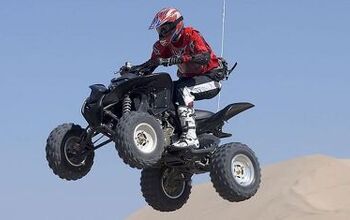


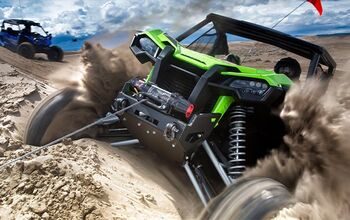
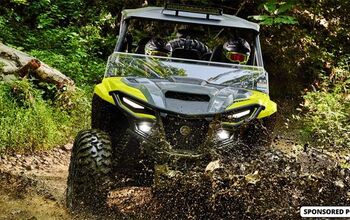

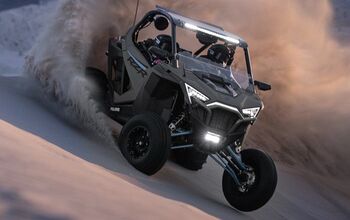



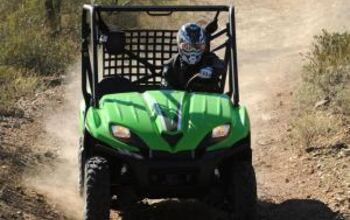

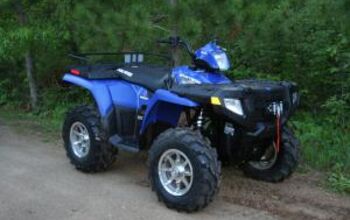
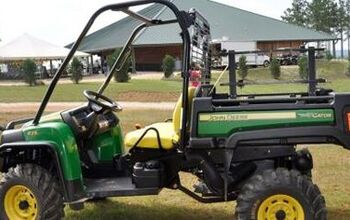


Comments
Join the conversation